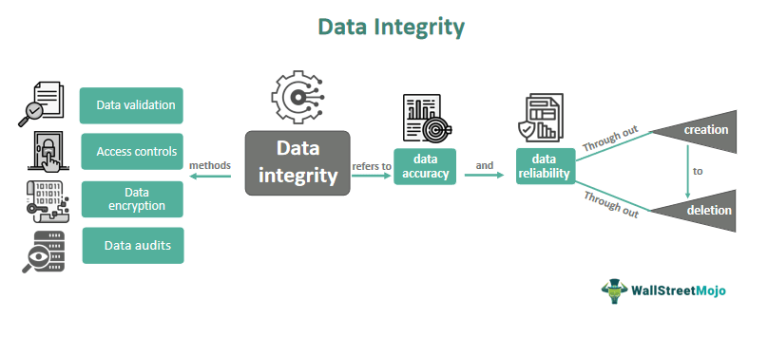In the digital milieu of today, the value of data has become immeasurable. Data integrity, the keystone of database management, ensures that information is both accurate and consistent throughout its lifecycle. But how exactly is data integrity maintained in modern databases? One might ponder if there exists an ideal method or technology that can be seamlessly integrated to prevent data corruption, whether through human error, system malfunctions, or malicious intent. This inquiry takes us deep into the labyrinth of modern database practices, as well as the challenges that accompany them.
Database integrity is upheld by a myriad of mechanisms and strategies, crucial for any organization relying on data-driven decision-making. The first line of defense often manifests through the enforcement of data integrity constraints. These constraints serve as pre-defined rules which dictate what data can be stored in the database and in what format. For instance, primary keys ensure uniqueness, while foreign keys maintain referential integrity between related tables. By employing constraints, databases inherently block invalid data from being entered, which is foundational in maintaining order within data structures.
Furthermore, validation rules bolster data integrity by ensuring that any input conforms to specified formats and constraints. Take user input as an example: if a database requires a date in the YYYY-MM-DD format, automated validation processes can verify this and prevent any deviation from the accepted format. Such proactive measures significantly reduce the risk of inaccurate data proliferation that can stem from careless user entries.
However, constraints and validations alone may not suffice, particularly as databases grow in complexity and scale. Enter the world of transactions. A transaction is essentially a sequence of operations performed as a single logical unit of work. It is essential that a transaction is atomic, meaning it must either fully succeed or fully fail to preserve data integrity. The term ACID (Atomicity, Consistency, Isolation, Durability) encapsulates the key properties of transactions. These properties ensure that data remains consistent even in the face of concurrent modifications or system failures.
Despite robust internal mechanisms, maintaining data integrity is not devoid of external challenges. One such challenge arises from the intersection of distributed databases and data synchronization. In environments where data is spread across multiple locations, ensuring consistent data integrity can become convoluted. Data replication techniques and consensus protocols, such as Paxos or Raft, can assist in managing these complexities. They ensure that all distributed database instances agree on the state of data, thus reinforcing integrity across all platforms.
Moreover, the advent of cloud computing has introduced its own unique set of challenges. Data stored across different clouds or geographical locations imposes the need for comprehensive governance mechanisms that maintain compliance with data integrity regulations. Organizations must grapple with the dichotomy of security and accessibility, as any vulnerabilities can compromise not only data integrity but also the trust of stakeholders.
Perhaps an equally intriguing issue is the evolutionary nature of databases themselves. As technologies advance, databases undergo significant upgrades that can inadvertently impact data integrity. Migration to newer database versions requires meticulous planning and execution to avoid data loss or corruption. This is where the importance of comprehensive backup strategies becomes paramount. Regular and systematic backups ensure that, in the event of a failure, data can be restored to its last consistent state, thereby maintaining integrity in the face of unforeseen challenges.
As organizations explore innovative database technologies such as NoSQL or NewSQL, the dynamics of data integrity take on new dimensions. NoSQL databases, known for their schema-less designs, challenge traditional integrity constraints. However, they address integrity from other angles, such as providing eventual consistency, which is essential for scalability in distributed systems. Understanding how these modern paradigms operate and their implications on integrity is vital for organizations seeking to leverage cutting-edge innovations.
With the increasing sophistication of cyber threats, protecting data integrity through security measures is paramount. Implementing encryption, both at rest and in transit, adds a substantial layer of protection against unauthorized access, ensuring that sensitive information remains intact and uncorrupted. Coupled with a strong access control mechanism, organizations can define who has permissions to alter data, thereby minimizing the risk of inadvertent changes or malicious attacks.
While technological solutions form the bedrock of maintaining data integrity, the human element cannot be discounted. A culture of data stewardship must be fostered within organizations to educate and empower individuals on the importance of data integrity. Regular training programs can equip employees with the necessary skills to recognize potential integrity issues, thus fostering a community that prioritizes data integrity as a shared responsibility.
In conclusion, maintaining data integrity in modern databases is an intricate tapestry woven from diverse strategies and practices. From constraints and validations to effective transaction management, and addressing external challenges such as data synchronization and security, the importance of a multifaceted approach cannot be overstated. As technology continues to evolve, so too must the methodologies employed to ensure data integrity, prompting organizations to remain vigilant and adaptive. Is your organization equipped to confront the challenges of data integrity, or does your approach demand a shift towards more holistic practices? The answer may well determine the future of data management.








Leave a Comment